How to pick your sales channels
Once you’ve set up your Avasam account, got your suppliers and chosen the products that you’re going to sell, now it’s time to decide where you’re going to sell. In some cases, this decision will be easy, but it might not be, so it might take a bit of time and effort to make a decision. If you’re new to eCommerce and DropShipping, you might think Amazon and eBay are the way forward, and they might be – but they are incredibly busy marketplaces, and they might not be the right move for your business right now. That’s why your target customer research, and understanding of marketplaces and other sales channels are so important.
In this post, we’re going to talk about what to think about when you’re choosing your sales channels, then we’ll talk a bit about some of the major marketplaces and what is good and bad about them. We’ll look at why you might want to DropShip on local marketplaces, and on your own website, so you can decide whether they should be part of a mixed eCommerce strategy now, and how it might change in the future.
What to consider when picking sales channels
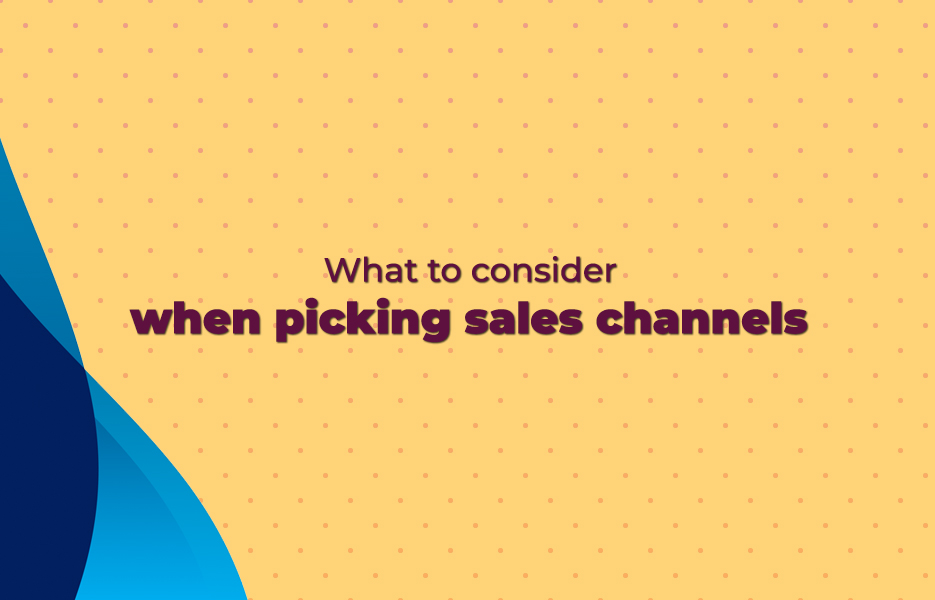
Before you start listing your products on any sales channels at all, you’ll need to decide which ones are right for your business. Here are some of the things you’ll need to keep in mind when you’re choosing which marketplaces and websites to sell on.
Refer to your target customer
Don’t think your products are perfect for literally everyone and so you don’t need to do target customer research. Your products might be bought by a wide range of customers, but by ignoring this crucial step to target your customers better, you’re making marketing activities trickier. And if you’re just starting out in eCommerce and DropShipping, you’re probably already understanding that there is a steep learning curve, so don’t make it harder than it already is.
The reason that you’ll need to refer to your target customer is that not every customer will shop on the same platform, and customers may shop on different platforms for different products. Your target customer research will be crucial for helping you to decide which sales channel is right for each of your products, and which ones to avoid.
Check the restricted items on the sales channel
If you’re going to go to the effort of listing your items on a marketplace, make sure you’ve checked their rules and regulations. In a lot of cases, it will be as simple as abiding by the laws that the marketplace operates, but there may be other restrictions that you need to consider, so do your due diligence. We touched on some other issues to consider when you’re selling on marketplaces, so be sure to check those.
Consider the cost of listing on the sales channel
Unfortunately, although the costs of DropShipping are pretty low, marketplaces themselves have overheads to cover – so they have to charge sellers in some way in order to meet those costs. There are several ways that marketplaces make money from sellers – so make sure you have checked the model they use when you’re deciding which marketplace to use. When you’re DropShipping, this is an absolutely essential thing to consider before you start listing on a sales channel. It’s especially important if you’re focusing on trending items, because your margins are likely to be pretty tight already.
Some marketplaces will use a combination of these models – so you might pay a listing fee and commission on each sale. And unfortunately, these aren’t the only fees you might end up needing to pay when you’re building your marketplace sales. Marketplaces are businesses that need to keep growing and making money for their investors!
You might encounter marketplace registration fees and transaction fees, on top of optional extras such as sponsored adverts, third party adverts and so on.
Commission model
Marketplaces operating on commission models are pretty popular – and it’s easy to see why. You don’t pay to list your item, or pay a monthly subscription. You won’t pay the marketplace until you’ve made a sale, so you’re keeping cash where you want it – in your bank account!
In short, here’s how it works: You list items for sale, free of charge. When a customer orders and pays for an item, the marketplace charges you a fee (the commission).
Commissions can be a flat fee, a percentage, or a combination of both. Since marketplaces operating on this model only make money on items you sell, it is in their interest to help you make sales. These marketplaces might have built-in tools to help you sell more – like SEO tools, reports and so on that you can put to use when scaling your business up.
Subscription model
This model is different from the commission model in that sellers pay a fee on a regular basis, no matter how much you sell. Prices might vary, and there might be better rates if you can pay for a year upfront as opposed to monthly. If you expect to sell a lot of items through that sales channel, then it might be worth paying that fee. The advantage of paying a subscription is that you know exactly what you will need to pay each month, but you’ll need to carefully assess the suitability of the sales channel, and do your maths. If the subscription fee ends up costing you more per item than you can afford with your margins, then another marketplace might work out better for you.
Listing fee model
With the listing fee model, you pay a fee when you add your item for sale on the marketplace. That means you need to use marketplaces charging listing fees carefully. You might choose to only list items you know you will definitely sell on those marketplaces, and use marketplaces that use the commission model for testing new items, or for items you sell fewer of.
Multichannel DropShipping
We know that there are sellers who do really well just selling on one marketplace. However, going all in on a single sales channel can be a risky strategy. Look at any online seller forums, and you won’t need to dig far to find threads discussing accounts being blocked or suspended on Amazon, eBay and more, and how difficult it can be to get those accounts reactivated. That’s why we suggest using a multichannel approach to your DropShipping business, to mitigate that risk. By selling on a range of sales channels, if there’s a problem with one of them and an account gets deactivated, you still have the potential to make sales on your other channels while you work the issue out.
Benefits of selling on a marketplace
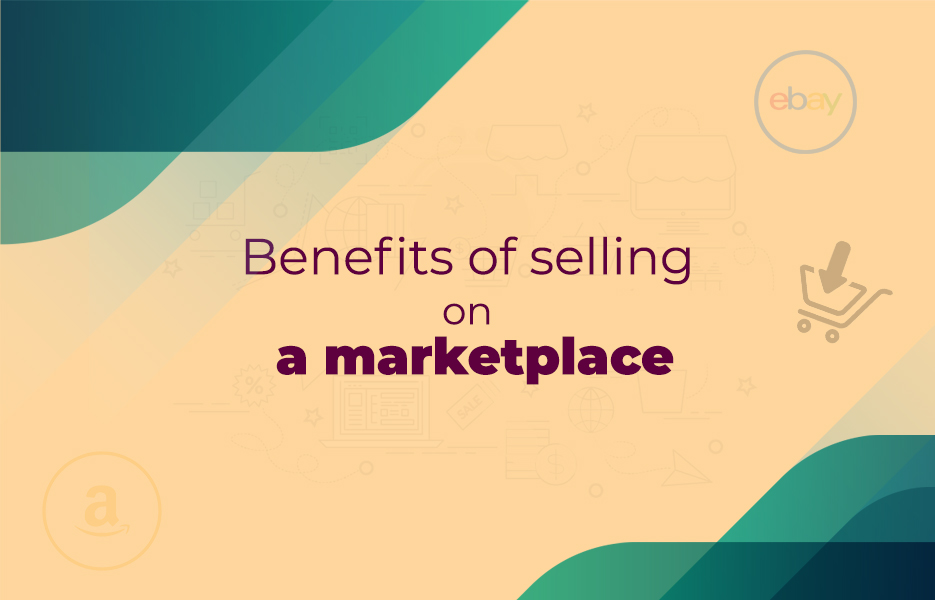
For many sellers who are DropShipping, a marketplace is where they make their first sales, even if their ultimate goal is to create a brand of their own. There are so many existing customers already using marketplaces such as Amazon and eBay, and since they’re already comfortable with the format of those websites (they trust the marketplace), it is likely to take a lot to pull them away. Even if you have an amazing website with a great customer journey and flawless payment options, customers are already invested in using marketplaces. That means making marketplaces part of your strategy is essential for successful DropShipping businesses. Here are a few more reasons to sell on marketplaces.
Existing trust
Customers who head for marketplaces do so because they know the marketplace will help them resolve any problems with their order, if there are any. They also know well-established marketplaces have a range of secure payment options to suit them, and that there are shipping standards that sellers must meet in order to continue to sell on the platform. It takes a lot of time to grow that trust, so if you’re selling on a marketplace, you’re essentially ‘borrowing’ that trust.
Reduce marketing costs
A number of marketplaces actively promote your products to the customers that they think will want to buy them. These are usually the marketplaces that take a commission when you make a sale – it’s in their interest to help you sell your products, because then they get paid! That means that selling on marketplaces can help to reduce your marketing budget, because your items will be in front of the right customers. That kind of targeted marketing is nearly impossible to replicate without significant amounts of time and budget – which new businesses don’t tend to have.
Product testing
If you pick the right marketplaces – those charging a commission or a subscription rather than a listing fee – you can use them for product testing, see how promotions perform for you and so on. For bricks and mortar retailers, or if you’re intending to grow your business further than just DropShipping, you can use marketplace testing to find out how popular items are before you invest in stock.
DropShipping on Amazon
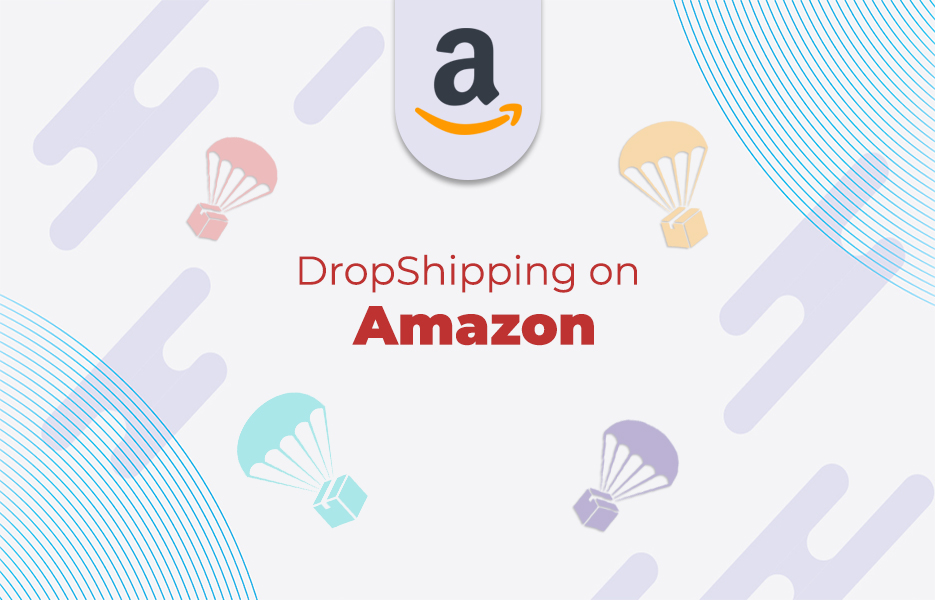
As by far the world’s biggest retailer, listing products on Amazon might seem like an obvious choice when you’re starting out in eCommerce. It might be a good option to add to your DropShipping strategy, but there are also a number of reasons to not make it the primary focus of your marketplace activity.
Advantages of selling on Amazon
Huge brand awareness
We challenge you to find someone who hasn’t heard of Amazon, because we bet you’d be hard pressed to find someone who knows absolutely nothing about it. In many cases – across the UK, Europe and North America, customers head for Amazon first – giving sellers the chance to make those sales.
Worldwide, Amazon’s brand awareness is almost unparalleled, even in countries where Amazon isn’t the top performing marketplace. And in those countries where it isn’t number one, Amazon is growing all the time – so if you choose to list your items with Amazon on international websites, you have a good chance of making sales in those countries.
Fulfilled by Amazon (FBA)
Customers are attracted to FBA options when they’re choosing their items because they think Amazon will provide a better service, and if there is an issue that it will be resolved more successfully. Now that isn’t necessarily true – we know most sellers and suppliers pride themselves on their service – but it is something to bear in mind when you’re thinking about DropShipping on Amazon. If your supplier already keeps some of their stock in an FBA warehouse, listing their items might be a good addition to your strategy.
Marketing costs can be reduced
If you’re starting out DropShipping and your business hasn’t made enough money to invest in your own website yet, then marketplaces can help you sell your products. Since customers are going to the marketplace to search for specific items, if you have those items and you create a great listing, you can make sales at a lower cost. Creating great listings is simple – we’re just talking about good use of language, using the right keywords for the product and making sure you have clear product images. Compare your listings with other successful listings, to ensure you’re not missing crucial elements.
Challenges of selling on Amazon
Starting to sell
Unlike eBay, Amazon are particularly strict about who can sell, and what they are allowed to sell. The Amazon marketplace is absolutely flooded with sellers, and so they can afford to pick and choose their sellers. Once you’ve signed up to sell on Amazon, you can be automatically be approved to sell on some categories, but for others you may need to wait for approval.
Keeping selling
Not only can it be tricky to get started selling on Amazon if you want to sell in certain categories, it can be incredibly easy to lose your seller account. Search ‘Amazon account seller suspended’ online and you’ll find thousands upon thousands of discussions on forums talking about how to get accounts made live again – and how difficult the process can be.
Payments – to Amazon and to you
We talked about marketplace fees earlier, and payments can be a huge challenge when it comes to DropShipping on Amazon. Not only do Amazon charge you a subscription that you have to pay upfront, they’re also going to charge a referral fee on each sale. That means your potential profit is going to take a hit.
Even when you have made sales on Amazon, unfortunately you can’t access those funds immediately. Amazon won’t make your payments to your bank immediately, as you might expect. They will keep hold of your money for up to 30 days (and sometimes longer, especially if your account is suspended for any reason) which may impact on your cashflow. You might need to think carefully about whether you need to make payments to your supplier using a credit card, or building up some money in your business account to buffer these issues if you’re DropShipping on Amazon.
Significant competition
Ever heard the phrase about the size of a fish and the size of the pond? Well, when you’re selling on Amazon, consider the size of the pond the entire world, and if you’re a new seller, your business is the smallest thing you can imagine. Since there is so much competition, it can feel hopeless selling on Amazon – indeed, less than 1% of sellers could make over $1 million in yearly sales. Keep Amazon in mind, and use it as part of a bigger strategy, depending on what you’re selling, who your target customer is and where they are.
Getting feedback
Sellers with positive feedback are more likely to get the sale where there are more than one listing available. Not only is getting your first sale on Amazon difficult, only around one in 30 customers will leave feedback for you. That means creating a positive feedback profile on Amazon can be really tricky.
Product restrictions
If you’re DropShipping branded items, you may find yourself at risk of losing sales, because Amazon put brand protection first. If you’re selling branded items, and that company tells Amazon they don’t want to allow other sellers to sell their products on Amazon – well, bad luck. You won’t be able to sell those products on Amazon anymore unless you’re an authorised reseller – which you’re unlikely to be if you’re DropShipping. Could be a huge problem if those branded items are your best selling products.
DropShipping on eBay
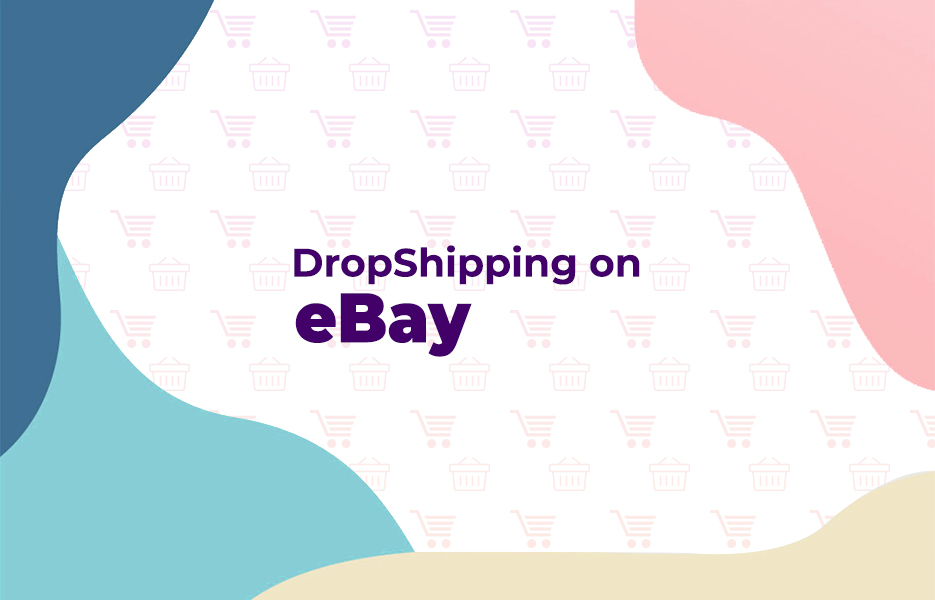
After Amazon, eBay is probably the next place you’ll think of when you’re starting a business selling online. It takes a huge share of online sales, and you’ve almost certainly visited the website when trying to find items online, even if you’ve never bought there. However, for a number of reasons, there are many sellers who will tell you that eBay isn’t right for DropShippers.
Let’s have a look at some of the pros and cons when it comes to selling on eBay!
Advantages of DropShipping on eBay
It is easy to start
When you’re getting a business off the ground, you want quick and simple ways to start making money. With eBay, starting to list your items is as simple as visiting the registration page and entering your details to get going.
Huge amount of potential customers
So, we all know eBay is massive, and has an enormous number of customers worldwide. Want to take a guess at how many? We didn’t get it – but in 2019, there was around 182 MILLION eBay users around the world, and that number isn’t likely to get smaller any time soon.
Marketing budget can be smaller
Since many customers will head for either eBay or Amazon by default, or go to either one of those marketplaces before they make a purchase decision, listing your items on eBay can help increase who sees your products. If you’re creating great listings on eBay, with good use of keywords, phrases and good product images, doing so can add to your marketing efforts without too much extra cost.
Selling on eBay around the world is easy
Once you’re listing on eBay in your own country, it’s relatively easy to start selling in other countries using eBay too. There’s 23 international eBay websites, so you can choose exactly where you want to sell. There are a few requirements – most notably, having a well rated eBay account, having a PayPal account (and being PayPal verified) and meeting the selling and item requirements in the country you’re selling to. It should go without saying, but we’ll say it anyway – make sure what you’re selling is legal in that country!
The Global Buying Hub makes selling internationally on eBay easy – but you can find out more options about selling worldwide on eBay here.
Disadvantages of DropShipping on eBay
Listing fees
Although your first 50 listing fees are free, eBay charge a listing fee for each item, and on top of that, they take 10% of the sale price of each item that you sell on the marketplace. If you’ve done your research about DropShipping, you’ll already know that your margins (your profits) can be pretty small. That means you’ll need to work out whether it’s worth you listing those items on eBay or not. You don’t want to end up paying listing fees for items that don’t end up selling, particularly if you’re in the first few months of starting your business.
Customisation options are limited
Key to long term success in eCommerce is creating a customer base that recognises, and becomes loyal to your brand. That can be really hard to achieve on marketplaces like eBay that don’t allow for much customisation – customers won’t start to recognise your brand’s logo, use of colour and so on. That means they’re less likely to seek your store out online too – because when someone asks them where they got their product, they’re going to say eBay, rather than you.
DropShipping on Wish
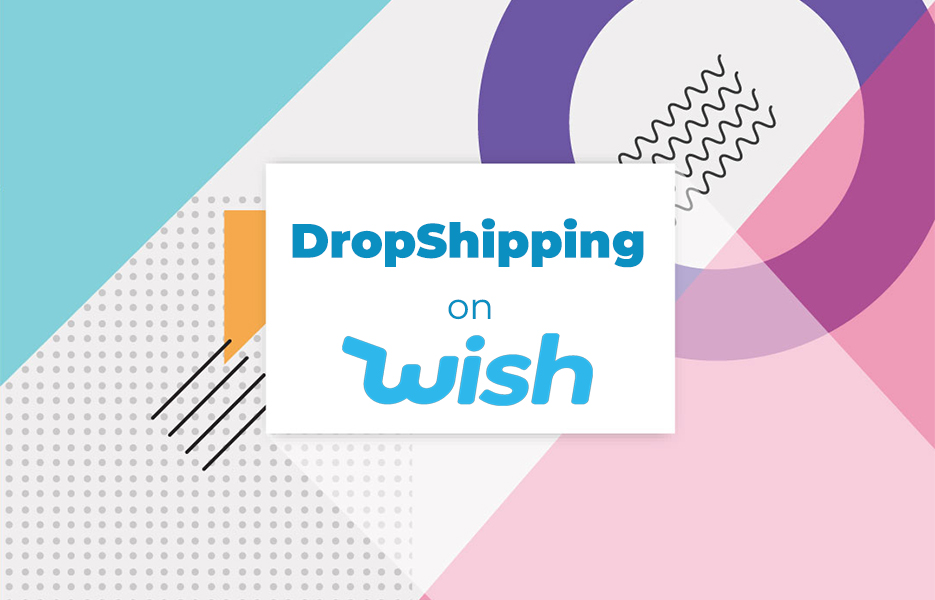
Wish is an online marketplace that is relatively new, only being 10 years old. The focus is on low-priced products, which is just one of the reasons that Wish had the most downloaded shopping app worldwide in 2018. Many items listed on Wish are from Chinese sellers, which means customers wait longer for their purchases. Sellers who are able to provide faster shipping at competitive prices may find Wish a good addition to their marketplace strategy.
Advantages of DropShipping on Wish
International customers
Wish operate internationally, so by listing products with them, you’re potentially exposing your items to millions of customers with no extra effort. Many customers know they’re buying from sellers in China when they buy from Wish, so they know they are likely to encounter long waits for their orders – even with ePacket. If you’re DropShipping, and you can’t compete with prices from China, but your supplier can get orders to customers in the next day or two, then you’re likely to make sales on Wish. Customers are willing to pay a little more for their orders if the price is a little higher, but they get their product quicker.
No fees until you make a sale
Wish operates on a commission model, meaning that your risk is lowered and you won’t pay for listing anything that doesn’t sell. Customers are looking for bargains and innovative new products (we won’t say gimmicks!) on Wish, so you can test the popularity of new products before adding them to other marketplaces.
Popular mobile app
The Wish mobile app is one of the most popular eCommerce apps, and has been downloaded over 100 million times. That means there’s an awful lot of potential customers scrolling through ‘window shopping’ – looking for a random little bargain when they’re on their commute, waiting to pick children up from school or just want a pick-me-up.
Targeted listings
Wish presents customers with different items depending on what the algorithm determines they will like. So a mum in her mid-30’s might see items for children, alongside women’s fashion and homewares. Sporty young men might see a range of sports equipment, clothing and outdoor gear. This will be influenced by what they’ve bought before, and information provided when they signed up. As a seller, this will benefit you directly – your products will be placed directly in front of customers who are most likely to buy those items. This kind of exposure would cost plenty if you tried to achieve it with digital marketing, so it’s definitely worth making the most of Wish for product awareness.
Challenges of DropShipping on Wish
Low prices
We all love a low price and the thought that we’re getting a good deal, don’t we? Well, Wish is a great place to find a bargain, but unfortunately as a seller that isn’t necessarily going to make life easy for you. Since many items on Wish are listed from sellers in China, those items are super-cheap. Competing with those prices means that your profit margins get squeezed even tighter than they already were, so to combat that you’ll need to offer your customers something more. You can highlight that your products are already in-country (assuming your supplier is too) and that you’re a native speaker of the language, which may help to encourage purchases, since they will trust you will make it easier to resolve any problems with their order.
Customer scepticism
Although Wish is pretty well known, there are plenty of customers who don’t completely trust Wish sellers. Fear of fakes, reports of poor service such as customer service consisting of canned responses, long delivery times and lost packages and mixed reviews on websites such as Trustpilot means many customers will head for Amazon or eBay. They’re unlikely to realise that they’re getting the same product from the same seller – they just know they have more trust in those marketplaces.
To mitigate this scepticism, you can emphasise the fact you’re in-country, and a native speaker – that goes a long way when building trust. If you’re making sales on Wish, then you’re likely to make sales on Amazon and eBay too – because you’re going to catch those customers who want your product but don’t trust overseas sellers.
Getting reviews
Following on from customer scepticism, another way you’ll already be aware of to build trust is to get plenty of reviews. When we check out listings on Wish, many do get plenty of reviews, but like everything, It’s the quality rather than the quantity of those reviews that really will help you up your sales. Many customers that leave reviews on Wish will only leave a word or two, because of the way the questions are worded when Wish invites them to leave feedback – which is your challenge.
DropShipping on Groupon
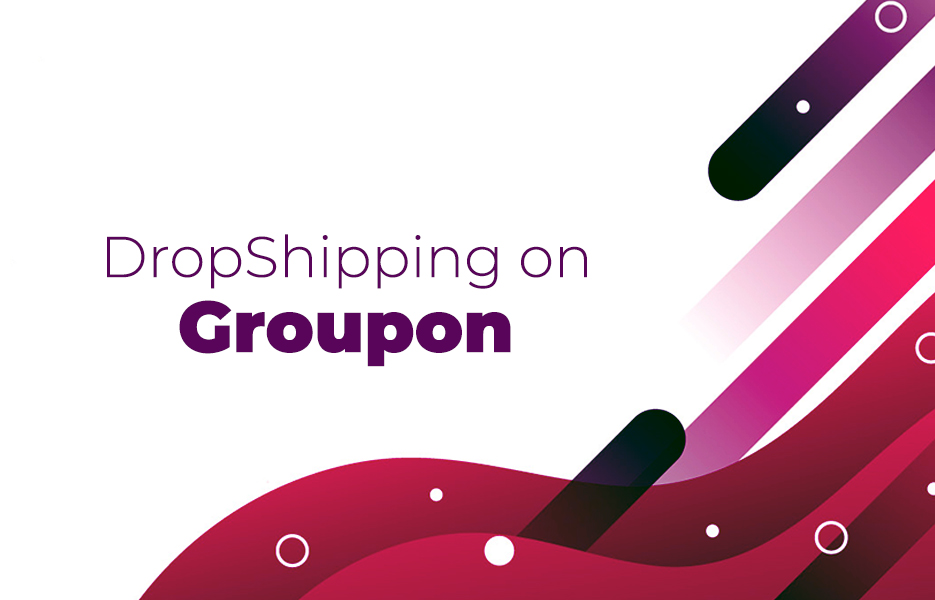
Groupon can get you some pretty decent sales – but there are challenges you need to be aware of before you get started. Without being prepared for the challenges we’ve listed here, and planning for them, it’s possible to end up losing money on your sales.
Advantages of DropShipping on Groupon
Targeted listings
Similar to Wish, Groupon puts products right in front of the customers that are most likely to be looking for them. Again, this is all down to a clever algorithm that uses purchase data alongside demographic information to present the right type of items to each customer. Combine that with the trust that already exists with the Groupon brand, the huge number of mobile app downloads and worldwide numbers of customers, there is huge potential for your business when selling on Groupon.
Great brand awareness &customer trust
When Groupon started out, they were promoting daily deals from local businesses. That local feel meant that trust built quickly, and that trust remains with many customers, even though they don’t necessarily know your brand. Sellers who are just starting out in eCommerce can use this trust while they’re getting started, and make sales at the same time.
Millions of customers worldwide
Despite being a local daily deals email in the beginning, Groupon has millions of customers around the world. There’s marketplaces in 15 countries worldwide, but since daily deals were being promoted in far more countries than that, it’s likely that Groupon marketplaces will reach even more countries before long.
Mobile sales
The Groupon mobile app is pretty popular – on the Google Play Store, it’s had over 50 million downloads and on the Apple App Store, Groupon is number 18 in the shopping apps (at the time of writing). Now that doesn’t necessarily mean there’s 50 million users actively using it on their phone right now – but it gives you an indication of the amount of customer interest there is in Groupon. Even if you make sales to a small percentage of that many customers, you’re going to dramatically increase your profits.
Challenges of DropShipping on Groupon
Customers want absolute bargains
Customers are using that ever-so-successful Groupon app to find extraordinary deals. Since Groupon started life as a daily deal email, it is now synonymous with that kind of business. That means you need to offer rock-bottom prices or combination sales to make your listings attractive to bargain hunters.
You’re not building brand awareness
Although Groupon is promoting your products for you, they’re not promoting you as a seller, or your business. That means you’re not encouraging repeat custom, and customers won’t recognise your logo or branding. Depending on your strategy and business plan, that might not matter to you. However, if you’re aiming to create a much bigger business than just selling on marketplaces then it’s something to bear in mind when you’re considering whether to sell on Groupon.
Keeping track of Groupon sales
Payment reconciliation can be hard with Groupon. There’s a reliance on spreadsheets, and this can detera lot of sellers. But in 2020, this isn’t necessarily a huge problem – particularly if you’re managing your sales using an automated DropShipping platform like Avasam. Automatic payment reconciliation and invoicing are likely to be built in – you just need to keep an eye on it so you don’t end up out of pocket.
DropShipping on Wayfair
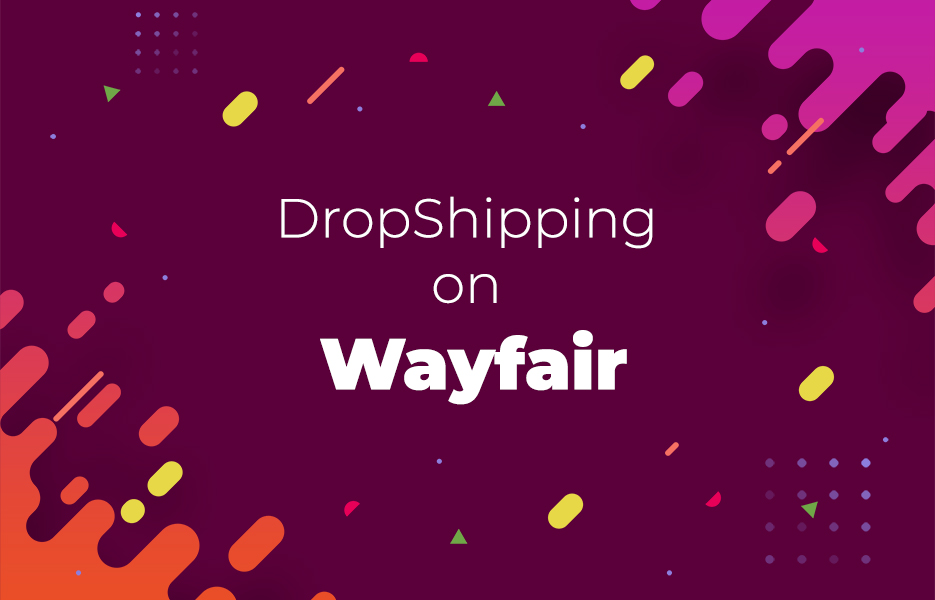
Wayfair started life as a DropShipping business just like yours. Today, their tagline is‘a zillion things home’ – which it really is! Homewares aren’t the only name of the game on Wayfair though – there are categories for outdoor, baby and kids, DIY and plumbing as well as pets. If you can fit into those categories, Wayfair can be a great addition to your marketplace strategy.
Advantages of DropShipping on Wayfair
Customers know what they are looking for
When heading to Wayfair, customers usually won’t be looking for rock bottom prices, even if they still want a good deal. They head to Wayfair because they have a specific item in mind for their home – whether that’s furniture, decorations or something for their pets. If you’re DropShipping homewares – especially if they are unique pieces – you’ll almost certainly want to list your bigger ticket items on Wayfair.
Excellent trust and brand awareness
Wayfair currently spend over $450 million on advertising annually, which means they’ve created huge brand awareness. Customers know when they head to Wayfair that they’re going to get quality products, and should they encounter an issue with their order, Wayfair will help them get sorted.
Huge customer engagement
Wayfair.com enjoys over 37 million visitors worldwide. That’s quite an audience, and as we already said, customers visiting Wayfair often know what they are looking for, so there’s a high possibility of making sales.
Wayfair’s owners started out as DropShippers
Although some sellers on Wayfair might be the supplier or manufacturer, Wayfair is a marketplace that encourages all kinds of sellers – DropShippers included. They know the challenges you’re facing, and they offer a wide range of support to help you succeed.
Challenges of DropShipping on Wayfair
Delivery options
If you’re DropShipping using local suppliers, then this might not be an issue for you. However, if you’re using suppliers from overseas, you need to be very clear about how long delivery is going to take. Being unclear about delivery times is likely to lead to complaints, cancelled orders or returns for you to deal with, and ultimately potentially damaging negative reviews. If you’re selling larger furniture items, there are additional challenges – you’ll need to arrange delivery times when the customer is home to receive the product.
Customers want unique items
When furnishing their home, customers may be looking for items that other people don’t have – they want a talking point. If you’re DropShipping items from suppliers who work with multiple sellers, then some of your items might already be listed. That means your listing isn’t unique – so you’ll need to put in additional work to encourage customers to buy from you. You can make sales if you have the same items as other sellers – but you’ll need to work to make those sales.
DropShipping on local marketplaces
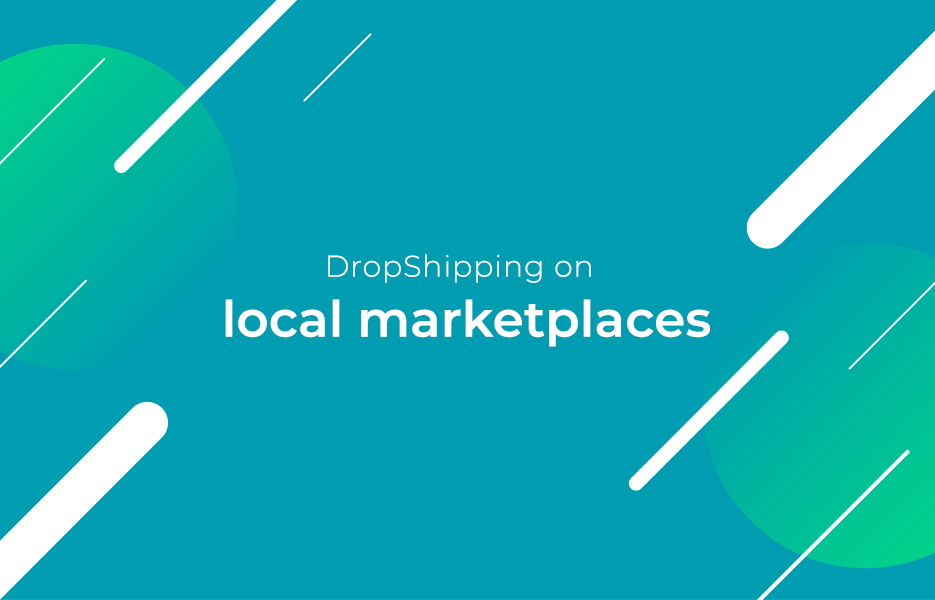
When we say local marketplaces, what we mean is marketplaces that are popular in particular countries. We’ve provided easy access to over 40 marketplaces worldwide on Avasam. We’ve already talked about the big ones – but there are some hyperlocal marketplaces that may hold potential for your business, depending on what you’re selling. Think about selling in Scandinavia with Fyndiq and Coolshop, or in Russia on Ozon. If you have fashion items, you might sell to European customers on Privalia and Spartoo. Want to sell to millions of customers in India? Consider selling on Flipkart and Elala. You can see more about our marketplace integrations here.
Advantages of DropShipping on local marketplaces
Targeting customers
When you’re selling on local marketplaces, you’re exposing your products to new customers. If you’re lucky enough to identify a niche in a country before anyone else has, you can capitalise on those sales and become the preferred seller for those products in that territory. If the marketplace allows you to create a storefront on their website, eventually your international customers will recognise your branding and look for your website.
Less competition
Although there might still be a huge amount of competition, if there are fewer sellers with similar products, you’re likely to make more sales in those countries.
Challenges of DropShipping on local marketplaces
Shipping
If you’re selling worldwide, keeping delivery rates and times reasonable can be a huge challenge. You can manage customer expectations in terms of how long they may need to wait for their orders – if customers know their order is from overseas, they will know they will have to wait. You’ll need to work with your suppliers to make sure your orders can be shipped to the countries you want to sell to, at a cost that makes sense – otherwise you might end up needing to cancel orders.
Language
If you’re selling on a marketplace in a country or region that you don’t speak the language for, you’re going to need translation services. Some marketplaces can provide this for you, which can be easy if you have product barcodes. However, not all do, and simply running your listings through Google Translate isn’t advisable since the subtle nuances that native speakers have just don’t make it in. You might think that isn’t a problem, but think about when you have seen a listing for a product from China that you have decided not to buy. It’s likely that there was broken English, spelling errors and so on. There’s an innate suspicion when language isn’t correct, and research shows that customers prefer to buy in their own language – which is something you definitely need to consider.
Customer service
On top of your listings being in the language of the marketplace region, you’ll need to offer customer service in that language too. You might be able to get away with some use of Google Translate, but if any issues aren’t resolved well, there’s a good chance that your customers will write reviews about their experience in their language – which may end up deterring other potential customers.
DropShipping on your own store
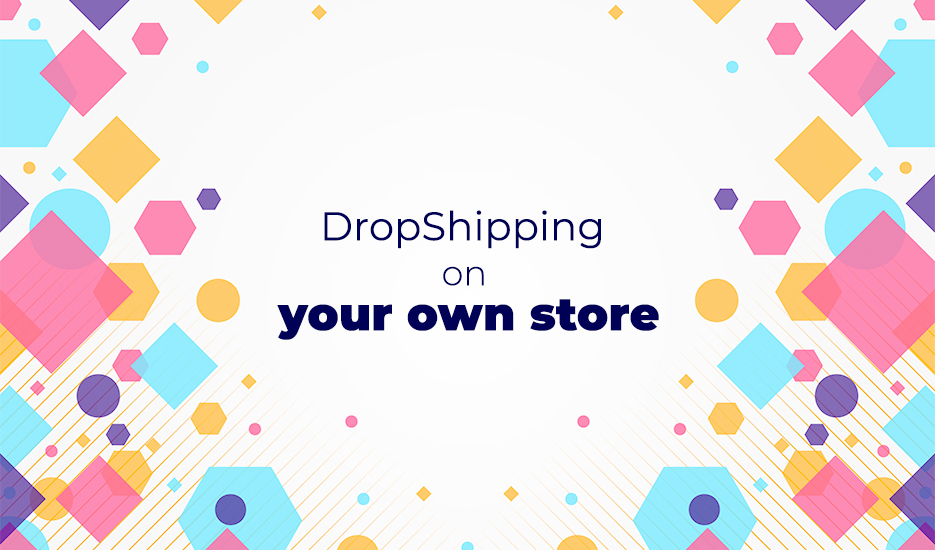
Although there are many reasons that you might choose to sell your products through different marketplaces, there are a number of reasons to not rely on them completely. You’re not in complete control of your sales, and there’s always a risk that your account may be suspended if you do something wrong – whether that’s intentional or not. You may find your cashflow slows, as some marketplaces will hold onto payments from your customers for days, or weeks. Since you need to pay your supplier in order to get that item out to the customer, that can be a challenge, especially when you’re starting out. Using a credit card, or a cash buffer might work for you, or suppliers may allow you credit once you’ve shown your reliability. However, with your own online store, none of those things are likely to be an issue, as you’ll receive payment as soon as your customer has paid.
There are a huge number of ways you can build your eCommerce store – BigCommerce, WooCommerce, Magento and Shopify are the big names, but they’re not the only ones you can consider. PrestaShop, OpenCart, osCommerce, Zen Cart, nopCommerce and 3dcart are all great options, as are X-Cart, Zencommerce and Kartrocket. Many of these are open source, and free to use. We discussed these options, costs and so on our post about DropShipping on Shopify.
Advantages of DropShipping through your own store
Payments
When your customer buys a product from you – depending on the options you’ve built into your website – you can access that cash immediately. With no waiting around for your funds to be released, you can build your business quicker.
Not only that, with your own website you don’t need to pay fees like you do on a marketplace. Sure, you’ll have costs to pay to maintain the website – but you won’t be paying the kind of fees on each sale, or for the privilege of listing the items that you do on a marketplace.
You’re building a brand
It is well known that repeat custom is cheaper to gain than new business, and so ultimately is more valuable. To get that repeat custom can be so hard – you’ll need to provide great service, and build your social media following. Once you’ve built your social media, and other marketing is working well for you, brand awareness grows – meaning your customers will begin to trust you more and more, and seek you out on your website, coming to you directly rather than to a listing on a marketplace.
You can add additional income sources
This advantage won’t apply to everyone, as each business owner will need to establish whether it’s right for them or not. But if you choose to, you can add extra marketing to your website to open up additional income through affiliate schemes. Websites like Amazon and AliExpress run affilate schemes that mean you advertise on your website, and when customers click through from your link and make a purchase, you get a referral commission. It may not be a lot to start with, but every little helps.
Challenges of DropShipping on your own online store
Building your website
There are easy ways of creating eCommerce stores for your DropShipping business. We talked about Shopify on the blog recently, and some of the alternative ways to create a website. They might take some time, but almost anyone that can use a computer can build a professional looking website relatively simply. But if you’ve never done it before and don’t have the time or inclination to build your website, then this might present a challenge – especially if you don’t have the funds to outsource it! If you do have funds available, then working with an agency that specialises in supporting eCommerce businesses is a good option. If your budget is lower, then you can work with a freelancer – you can find one through websites such as Fiverr.
Getting customers to your website
Just because you’ve built your website, doesn’t mean potential customers will automatically find you. You’ll need to do some serious work on optimising your website for SEO, and make sure you’ve used the right keywords and so on. You can encourage existing customers to visit your website by engaging with them on your social media channels.
Keeping your website secure
Once your website is live and making sales, don’t think that job is complete forever. There’s a lot of work that goes into keeping an eCommerce website secure, no matter which platform it is built on. And even if you have fantastic website developer skills, keeping a website up to date with security updates, patches and so on can be a drain on the time that you have for your business. You might choose to outsource that task to a friend, or a freelance consultant if you have room in your budget for that. However you choose to keep on top of applying those updates, it is essential that you make sure they are done as soon as possible after they’re released – the slightest hint that your website isn’t secure will send customers elsewhere.
Using conversational marketing
You’ve probably been to websites where a little message window appears, asking you a question – like, if you need help, or if you have found everything you’re looking for. You’ll have seen one on the Avasam site! In most cases, this will be handled by a chatbot – which you can make use of too. If you use the right system, a conversational commerce platform can help you connect with customers not just on your store, but also on other channels you connect with them, including social media. The increased trust you can gain by offering these services is well worth the very affordable investment.
Which sales channels are right for my DropShipping business?

Unfortunately, although we can share a lot of information with you, there really isn’t a right or wrong answer to which marketplaces and websites are right for your business. Although you might end up listing products on the same sales channels as another business, your reasons for doing so will be different. The right combination of sales channels for your business will depend on many factors – what you’re selling and who your target customers are, what point you’re at in your business and what your business can afford in the way of fees. The sales channels you sell on is dynamic, and may change from month to month, and year to year. You’ll be using your sales reports to help you decide which channels are performing and which aren’t, so make sure you’re interpreting them well.
There’s a huge range of marketplaces and websites that you can use to sell on. We’ve barely scratched the surface on this post, for fear of the post becoming overwhelmingly long! However, the number of marketplaces available to you as a seller is a good thing – it means the possibilities for expanding your business, while not quite endless, are significant. If you’re using a DropShipping platform to manage your products and sales, you will find it easy to add additional sales channels. As long as you’re doing your research, choosing your sales channels carefully and making sure the fees they’re charging don’t hit your profits too hard, your business can continue to grow exponentially. Keep working hard on growing your social media following, and between your social media, your marketplace sales and your own website, you’ll be creating a solid business that can thrive.

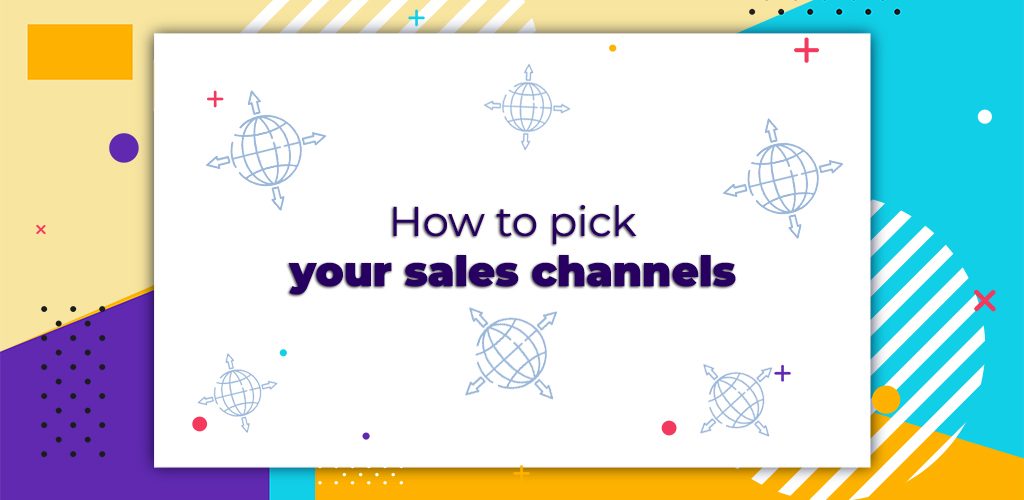






DropShip products from verified suppliers to diversify your inventory and scale your eCommerce business